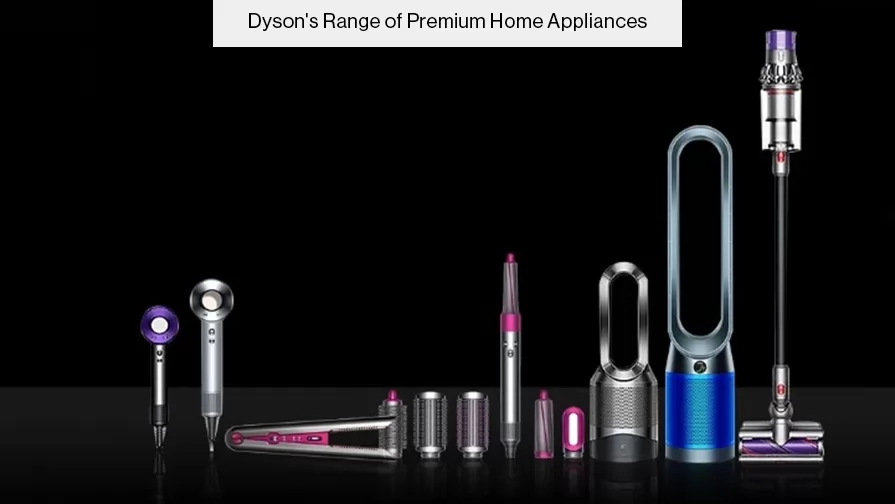Key Lessons from Dyson to Boost Your Direct-to-Consumer Retail Growth
Content Summary :
Why Dyson’s DTC Strategy Works
Take Back Control of Your Brand’s Online Presence
How Digitally Advanced Brands Use AI as a Differentiation Strategy
How to be a DTC Trailblazer in 2022
Futureproof your Digital Growth with Dyson’s Data Best Practices
The strongest brands are reclaiming control of their online retail channels and Dyson’s eCommerce strategy is a true testament to what the power of AI can do for you. The company behind the wildly popular and successful Supersonic™ hair dryers and futuristic-looking air purifiers, reported a steady revenue growth over 2020, despite the challenges posed by the pandemic and the resulting global supply chain crisis. A Black Friday favorite, Dyson has moved towards a hybrid approach to selling on marketplaces. The brand pulled out from Amazon in certain countries, doubled down on building a strong direct-to-consumer (DTC) brand positioning with its “Buy direct from the people who made it” stance and invested heavily in Machine Learning over the past year.
In this post, we will unpack what this means and how your brand can replicate Dyson’s DTC success to grow on digital channels.
Why Dyson’s DTC Strategy Works
With growing brand compliance concerns, poor seller experience, and cutthroat price wars on multi-retailer marketplaces, owning a direct channel to consumers has become a lucrative option for many brands. In Dyson’s case, protecting its IP and maintaining a premium brand perception is an integral part of the brand’s differentiation strategy. Featuring Dyson products on websites that often run heavy discounts and carry counterfeit products does not always align with the brand’s stature. Inconsistent pricing, poorly crafted product pages and encroaching private label products further lead to less than ideal customer experiences. This reinforces the need to have more control over how the products are represented and sold.
Dyson’s DTC website has done a commendable job of offering an added value proposition to its customers while tackling the challenges mentioned earlier. With competitive price matching across its authorized seller network, it maintains a tight grip on product pricing. A big part of this enforcement rides on the AI capabilities it has built over time. Brand governance in this day and age is virtually impossible without an advanced data capturing and processing infrastructure. By monitoring unauthorized seller activities, you too can tighten your product distribution and enforce brand policies more effectively.

Take Back Control of Your Brand’s Online Presence
With the prevalence of gray market goods and resale stores, brands must educate customers about counterfeit and fraudulent items, as well as ways of spotting them, like Dyson does. Websites should include content about the parallel economy, how it affects both brands and customers, and what buyers should do if they feel they are purchasing counterfeit goods from unauthorized sellers. Additionally brands can offer loyal customers discounts and gifts to leave verified reviews on their website. 55% of US online adults say it’s important for a retailer’s website to offer professional ratings and reviews, according to this report from Forrester. This puts the onus on companies and manufacturers to loop in their brand community in ensuring that buyers have access to accurate information before making a purchase.
Going a step beyond providing such assurances, Dyson clearly outlines the many advantages of buying direct including authenticity guarantees, 30-day return policy, price matching and product financing on its DTC website. It is also noteworthy how no sellers are listed on the website to bring the focus singularly on direct sales. It also offers the option to personalize after-sales support and exclusive deals through product registration, thus owning data across every customer touchpoint.

From a data strategy perspective, this is an incredible feat that lets Dyson protect and grow its innovation pipeline, like the technology that powers the Dyson 360 Huerist robot vacuum. Every consumer brand stands to benefit from such unbridled access to its customers. Embracing new-age technologies can also help you leverage this data to offer smarter recommendations and better product assortments.
How Digitally Advanced Brands Use AI as a Differentiation Strategy
DTC brands are redefining brand-customer relationships today. They are elevating the brand experience by infusing AI at every step and often closing the data loop for end-to-end optimization. Dyson serves as a classic example of AI-led product innovation and user behavior mapping. The brand also uses innovative channels on its website like Dyson Live – a live stream feature that allows shoppers to see live demos, interact with stylists for their hair care line, shop featured products like the Dyson Airwrap™ styler during livestreams and more – and in the process, elevating the digital customer experience. Additionally, customers can buy refurbished products with brand warranties. All of this serves to offer a better, more personalized buying experience compared to what eCommerce marketplaces typically provide.


Not all brands were created equal. Your business model may not necessarily benefit from Dyson’s approach to AI but there are other great examples that your brand can learn from:
- Levi’s DTC website uses an AI-enabled product recommendation engine that uses shoppers’s behavioral cues to give personalized recommendations.
- KitchenAid has established a consistent product distribution and pricing across every eCommerce marketplace by eliminating gray market listings.
- Nestlé’s AI-integrated digital supply chain system allows it to better detect and respond to consumer demand, analyze data, feed back upstream production decisions, and optimize new product decisions in a timely manner.
How to be a DTC Trailblazer in 2022
Brand manufacturers are opening up to the appeal of moving into direct-to-consumer channels and engaging directly with consumers to increase profits. This transformation, however, presents its own challenges. Owning the customer engagement data comes with great responsibility. The best performing DTC brands are using the insights they gather in interesting and unique ways that puts customer-centricity at the forefront. And it all starts with a robust and reliable data management system. As Dyson’s Head of Global Data and Analytics team, Ryan den Rooijen said, “A good application of artificial intelligence is a bit like a very good pasta, the secret isn’t in the complexity of the recipe. It’s in the quality of the ingredients.”
The buck doesn’t stop here though. For brands like Dyson, Nespresso, KitchenAid etc., every instance of improved customer experience directly unlocks new levels of profitability. They draw in customers with narrowed-down, hyper-personalized choices that simplify their buying decisions and trigger purchases. If you can figure out a link between growing sales and tapping into unmet customer expectations with the data you collect, you too can propel your brand on DTC channels.
Here are some areas where DTC brands can leverage AI for unmatched digital growth:
- Complete control on pricing and distribution
- Improved demand planning
- Authentic brand experiences that are hard to replicate on traditional channels
- Product visibility and search performance
- Consistent omnichannel customer experience
- Margin growth through enhanced value drivers like differentiated features, cost savings, operational and supply chain control
- 360° insight into product and market performance
- Continuous product and service innovation
Futureproof Your Digital Growth with Dyson’s Data Best Practices
Dyson’s Den Rooijen endorses the mantra, “you treasure what you measure,” when it comes to KPIs and analytics. Make sure your brand’s analytics teams are getting the full picture using well-rounded short and long-term performance indicators. When it comes to the data itself, “you respect what you collect” is a better refrain. Don’t drop the ball knowing you are capturing the customer journey. Plan systems for future applications of this data. And if this sounds like a lot of investment, turn to a trusted AI partner to implement a reliable and value-adding data pipeline for you without needing to spend on additional capabilities and resources. And above all else, stay agile and responsive to what your customers and market are saying. The pace of technological change is such that it’s practically impossible to stay on top of trends while relying on internal data capabilities. Your data partner is your biggest ally!
Need help figuring out how your team can leverage AI to achieve unprecedented DTC retail growth and customer satisfaction? Book a Demo with one of our experts today!




